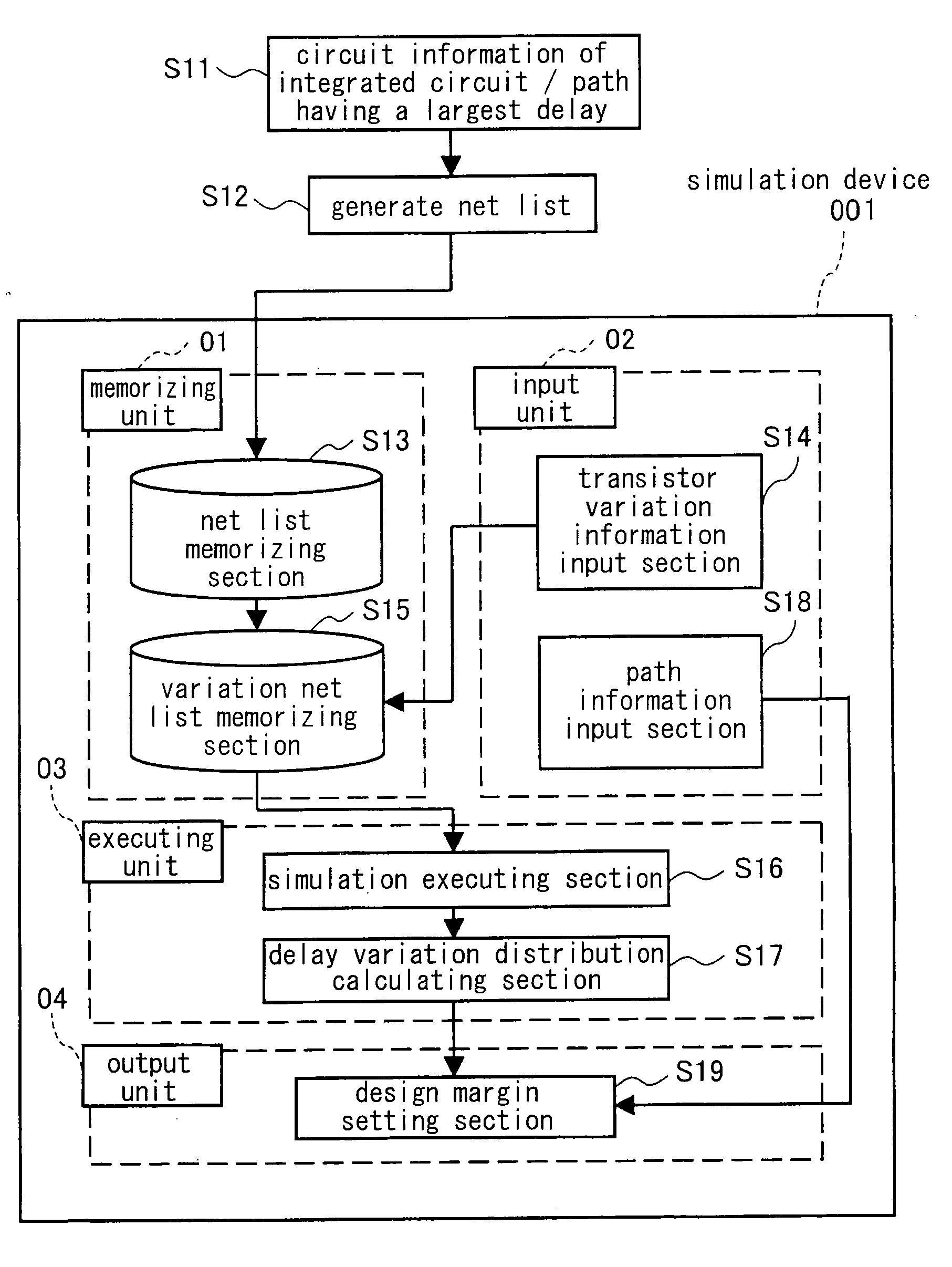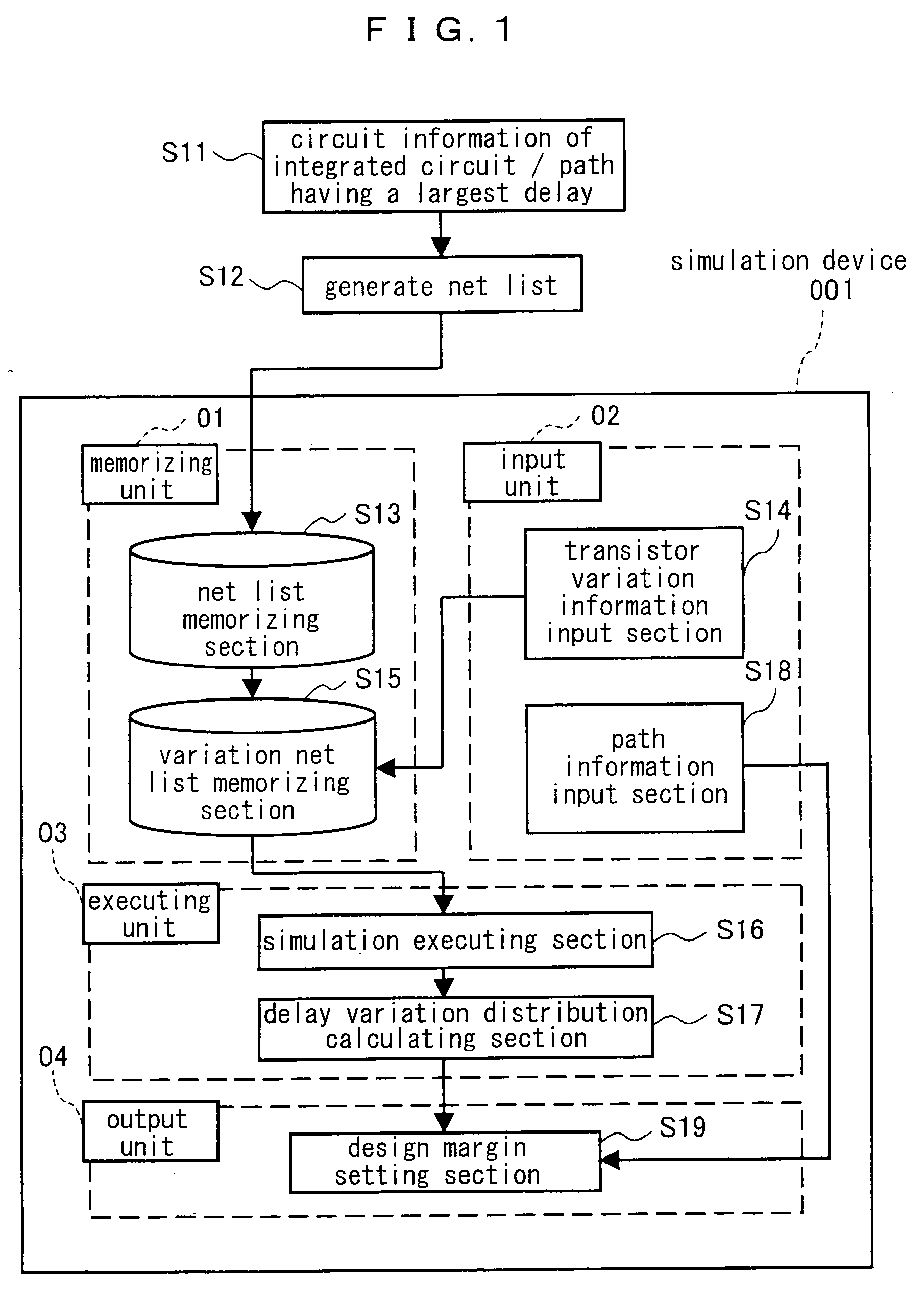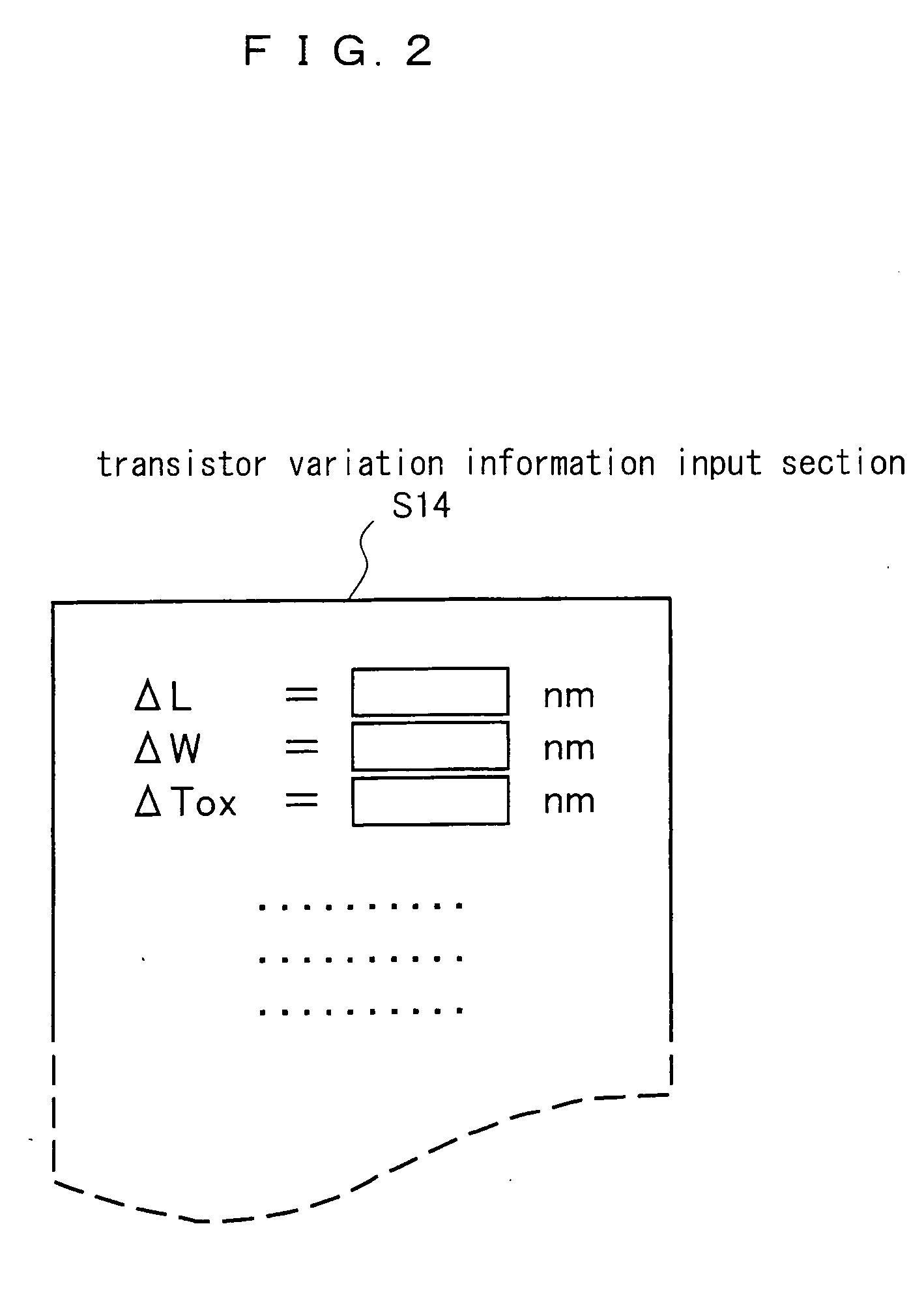Simulation device for integrated circuit
a technology of integrated circuit and simulation device, which is applied in the direction of instruments, computing, electric digital data processing, etc., can solve the problems of reducing the device length of the transistor, adversely affecting the fluctuations in manufacturing conditions, and difficult to set the design margin of the integrated circuit at one pattern, so as to achieve the effect of more accurate design margin and even more accurate design margin
- Summary
- Abstract
- Description
- Claims
- Application Information
AI Technical Summary
Benefits of technology
Problems solved by technology
Method used
Image
Examples
embodiment 1
[0046]FIG. 1 is a block diagram illustrating a structure of a simulation device 001 for an integrated circuit according to an embodiment 1 of the present invention. The simulation device 001 comprises four components, which are a memory unit 01, an input unit 02, an execute unit 03 and an output unit 04. Below is described a method of simulating the integrated circuit using the simulation device 001.
[0047] First, a path having the largest delay, that is a critical path, is selected among the flip-flops of the circuit and the paths of the flip-flop circuits as an information of the integrated circuit to be inputted to the simulation device 001 (Step S11). Then, a net list of the path selected in the Step S11 is prepared (Step S12), and the prepared net list is stored in the memory unit 01 (Step S13), wherein an operation of the Step S13 is executed by a net list memory section of the memory unit 01. The net list memory section corresponds to the first memory unit according to the pr...
embodiment 2
[0058] Next, a simulation device 002 for an integrated circuit according to an embodiment 2 of the present invention is described. In the embodiment 1, the critical path having the largest delay in the paths between the flip-flop circuits is used as the information of the integrated circuit used for the simulation. In contrast to the embodiment 1, a net list of an arbitrary path in an actual circuit block is used in the embodiment 2, wherein the design margin can be set in view of any influence from the path on the delay variation.
[0059]FIG. 5 is a block diagram illustrating a structure of the simulation device 002 for the integrated circuit according to the embodiment 2. The reference numerals shown in FIG. 5 are identical to those shown in FIG. 1 (embodiment 1), and the same reference numerals denote the same components. Any component described in the embodiment 1 is not described in the present embodiment again. Below is described a feature on structure of the embodiment 2.
[006...
embodiment 3
[0061] Next, a simulation device 003 for an integrated circuit according to an embodiment 3 of the present invention is described. In the embodiment 2, an arbitrary path in the actual circuit block is used as the information of the integrated circuit used in the simulation. In contrast to the embodiment 2, net lists of a plurality of arbitrary paths in the actual circuit block are used in the embodiment 3 so that the design margin can be set up in view of any influence from the plurality of paths on the delay variation.
[0062]FIG. 6 is a block diagram illustrating a structure of the simulation device 003 for the integrated circuit according to the embodiment 3. The reference numerals shown in FIG. 6 are identical to those shown in FIG. 1 (embodiment 1), and the same reference numerals denote the same components. Any component described in the embodiment 1 is not described in the present embodiment again. Below is described a feature on structure of the embodiment 3.
[0063] The plura...
PUM
 Login to View More
Login to View More Abstract
Description
Claims
Application Information
 Login to View More
Login to View More - R&D
- Intellectual Property
- Life Sciences
- Materials
- Tech Scout
- Unparalleled Data Quality
- Higher Quality Content
- 60% Fewer Hallucinations
Browse by: Latest US Patents, China's latest patents, Technical Efficacy Thesaurus, Application Domain, Technology Topic, Popular Technical Reports.
© 2025 PatSnap. All rights reserved.Legal|Privacy policy|Modern Slavery Act Transparency Statement|Sitemap|About US| Contact US: help@patsnap.com



